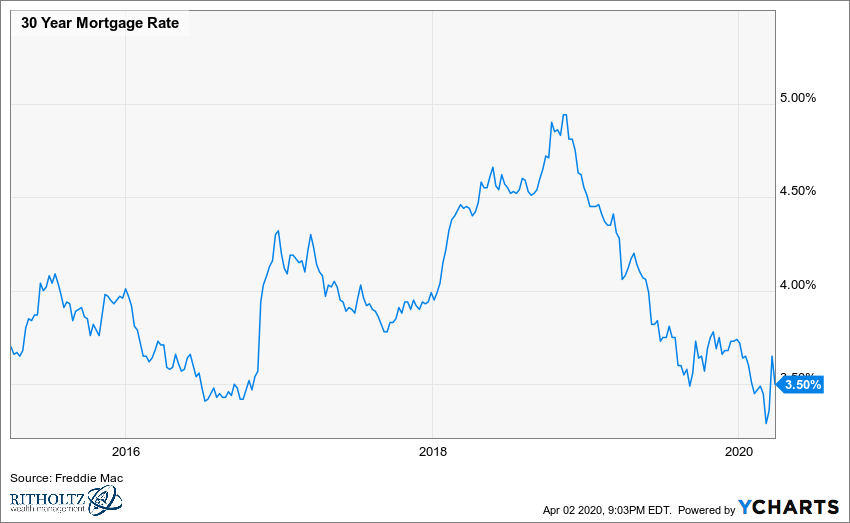Like the answers to most things in life – it depends.
Mortgage rates steadily decreased from around 4.5% in 2018 to around 3.5% today.

According to Barron’s: “For someone with a $300,000 loan, the difference between 4.5% and 3.5% is nearly $200 a month and $62,000 in total interest over 30 years.”
Savings like these make the decision seem like a no-brainer. If adding a couple of hundred bucks to your cash flow makes a significant improvement to your lifestyle, maybe you should go for it.
Additionally, if refinancing prevents you from dipping into a bear market depleted retirement account, the benefits make more sense.
Unfortunately, this decision isn’t as cut and dry as it may appear.
This process isn’t free. Costs usually range from 2-5% of your principal. Retirees must take into account the number of years left on their current mortgage.
Refinancing a mortgage near the end of its term is usually a no go.
Barron’s points out.
“What many people also overlook is that refinancing restarts the clock on amortization. If you’re 20 years into a 30-year loan, refinancing can reduce your monthly payment, but you could pay more in total interest over the life of the loan.”
Here’s a refinance calculator to your own numbers.
There’s a way to get your mortgage cake and eat it too. Instead of using savings from the lower rate to supplement your income, apply these funds to the principal of the new mortgage each month. This will severely cut the length of the new loan.
There’s a divide amongst experts whether investors should enter their retirement with mortgage debt. Many suggest paying it off in full. Fixed costs like a mortgage can be very problematic. If the unexpected emerges in a retirement plan, mandatory bills are unwelcome guests.
Paying off a 4&% loan in its entirety is equivalent to earning a 4% risk-free return. Currently impossible in a time of near-zero interest rates.
Unfortunately, this choice isn’t available to many retirees. Mortgage Banker American Financing completed a disturbing study. They found in 2018 44% of Americans ages 60-70 hold a mortgage in retirement. Shockingly, 17% have expectations they will NEVER pay their loans off.
If full payment is an option and current cash flow isn’t an issue, paying off your mortgage and not refinancing is likely your best choice.
We recently spoke to clients in this position. They held two mortgages at slightly different rates. Our solution cements the concept that personal finance is more personal than finance.
Since our client is somewhat of a worrier, eliminating debt is paramount to his mental well-being. We advised taking cash and paying off the lower interest rate, smaller loan in full. Next, applying the remainder to the principal to their second loan. Using the increased cash flow to attack the second loan with a vengeance, eliminating the second mortgage in a timely fashion
This strategy is called the snowball effect, paying off an entire but smaller debt alleviates mounds of stress and provides terrific behavioural incentives for attacking the next debt target. Success breeds more success.
For retirees desperately needing to increase their cash flow, refinancing makes lots of sense. Daily needs are priority one.
Like most topics regarding personal finance, there’s no cookie-cutter solution.
Understanding your current situation and creating a plan maximizing benefits while minimizing costs is paramount.
One of the few positives during our current crisis are near-zero interest rates for borrowers.
Exploring all your options regarding refinancing your mortgage is key. With the Federal Reserve pumping massive amounts of money into our economy, spiking long term interest rates are a low probability event.
Don’t rush your decision.
If you need some help regarding your retirement planning, you know where to find us.
Source: Now Is a Good Time for Retirees to Refinance. Here Are Some Points to Ponder. By Sarah Max, Barron’s





